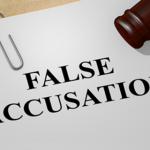Are Male Victims of Domestic Violence Overlooked?

Twenty-two year old Alex Skeel was found bruised, bloodied and close to death when discovered by police in the flat he shared with his partner Jordan Worth, the mother of his children.
Ms Worth told officers her boyfriend suffered from a medical condition that caused him to have “bouts of self-harm” and had “hurt himself”.
But the real story unfolded over the next few days. Mr Skeel eventually opened up to police and explained the reason for the bloody injury to his head, the scarring on his arms and legs, and his malnourished body.
Over a sustained period of three years, he had been regularly and violently abused by his partner: hit with a hammer, had boiling water poured onto him, attacked with a bread knife, starved, and made to sleep on the floor. On one occasion, Ms Worth hit him in the face with a hairbrush and knocked out his tooth.
Justice has finally prevailed and Worth has been sent to prison in the UK for seven and a half years.
Abuse often remains undetected
But for many men who suffer abuse at the hands of women, especially their intimate partners, it is not something they talk about, or necessarily want to admit to. Some even say they don’t report the abuse because they don’t think authorities would believe them.
The other problem, of course, is that domestic violence tends to happen out of sight. It is not always easy to detect either – couples can look incredibly happy on their social media pages, but it can be a different story behind closed doors.
Ms Worth is not the stereotypical abuser either. She is a university graduate who comes from a loving family. She was involved in community volunteering and fundraising, and aspired to be a teacher.
Abuse comes in many forms
Domestic violence is often defined in physical terms – encompassing anything from a slap, to being pushed, grabbed or beaten. But, in reality, it comes in many forms – including emotional abuse, isolating someone from family and friends and censoring contact with others.
It can occur through humiliation, intimidation, dominant behaviour such as controlling the family finances and other forms of psychological abuse.
It is often signified by sustained oppressive conduct, which frequently escalates as time goes on.
One in three victims is male
Studies suggest that in Australia, one in three victims of domestic violence are male, and one in seven men report being emotionally abused.
But professionals say the reported figures don’t represent the full picture.
The Australian Bureau of Statistics (ABS), which bases its findings on Personal Safety Surveys (PSS), suggests that as of 2012, 89 percent of males who found the courage to report domestic violence were abused by other men.
Although this statistic may be skewed by the shame of a man reporting abuse at the hands of a woman.
Are male victims overlooked?
Domestic violence typically conjures up images of abuse against women and children, but the perception of family violence is changing and violence against men is slowly being recognised as part of the spectrum.
In 2016, the Royal Commission into Family Violence in Victoria acknowledged male victims,
finding that, although resources should not be diverted from women and children, the system needs to encourage males to come forward and respond more supportively towards them.
Of more than two hundred recommendations made by the Royal Commission, two specifically relate to male victims:
- Government to promote the Victims Support Agency as the main source of assistance for male victims. Agency to provide online resources.
- Victims Support Agency and other relevant support services should develop arrangements to ensure male victims get help.
Like females, males also need to recognise domestic violence looks like, and be taught from a young age they don’t need to be ‘tough’ and accept abuse.
There are many reasons people don’t leave abusive relationships or speak up, whether they are men or women. And sadly, many men who feel isolated with nowhere to turn end up taking their own lives rather than reaching out for help.
Domestic Violence can happen to anyone. And while it is commendable that our Governments at both a Federal and State level are spending millions on programmes and initiatives aimed at reducing violence against women, and have introduced a range of new laws to better protect and support victims, we need to openly acknowledge that men can be victims of domestic violence too, particularly when it comes to the provision of adequate services that support their needs.
And if we are intent on tackling and reducing the problem of domestic violence in Australia then we need to ensure that the conversation doesn’t just start and end with abuse against women and children, but talks about all forms of family violence.
Domestic violence can happen to anyone, regardless of age, gender, sexual preference, relationship status, culture or religion or socio-economic background.







